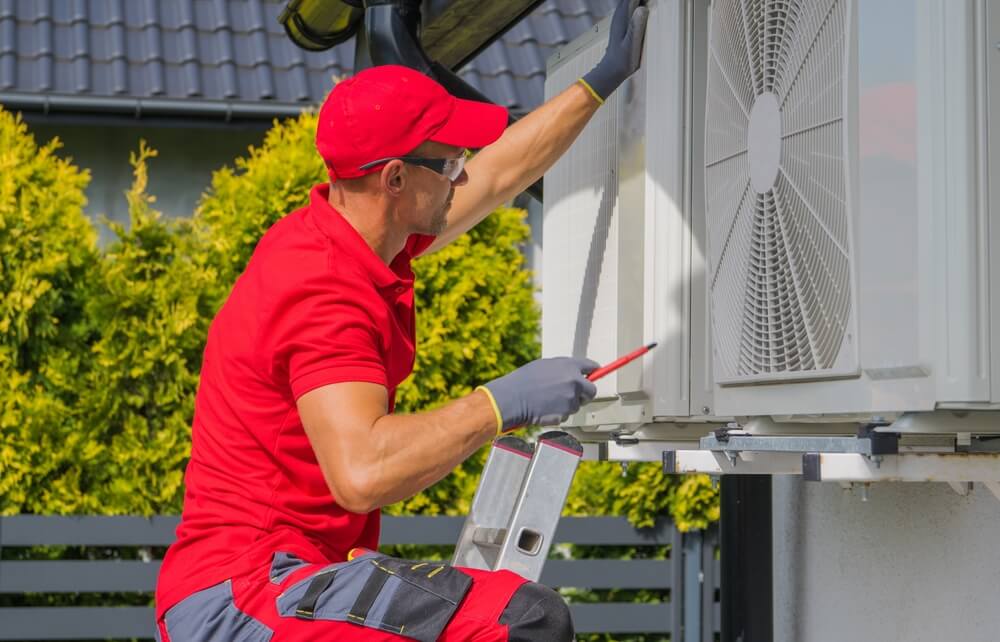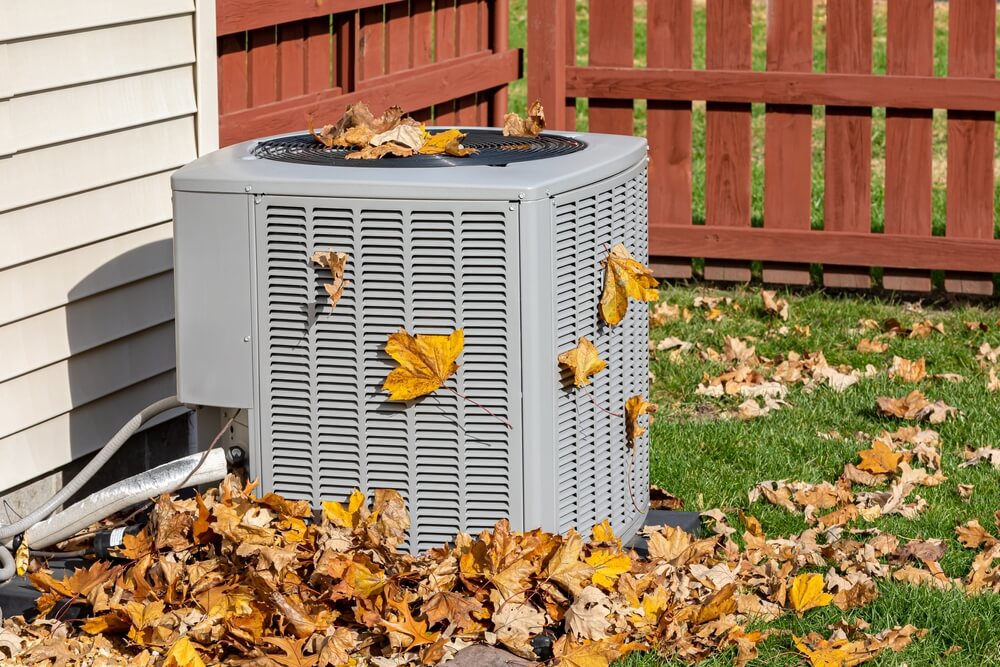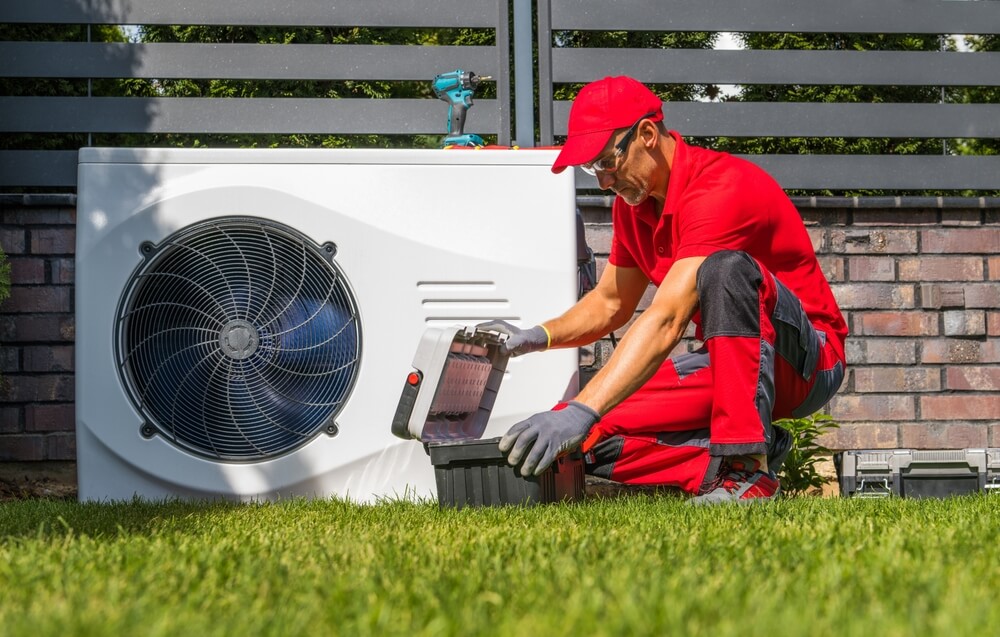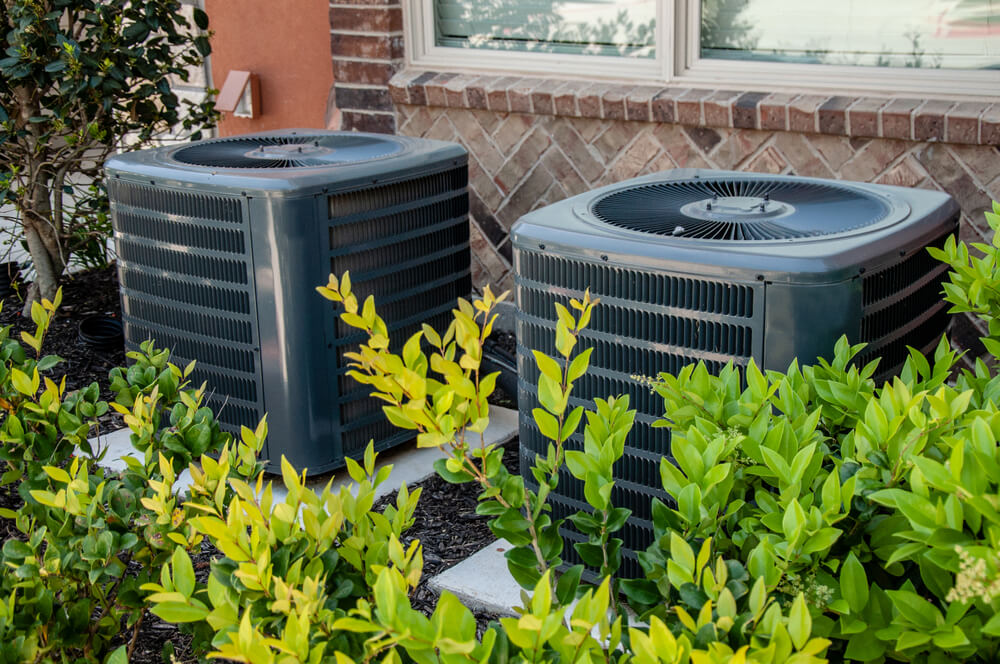Blog
HVAC Maintenance Checklist
Maintaining your HVAC system is crucial to ensure its longevity and efficiency, and reduces the chance of surprise breakdowns. Regular maintenance not only prevents future problems but also saves you money by increasing your HVAC system’s energy efficiency. It is important to get your AC, furnace, water heater and gas line serviced once a year to maintain proper functioning. Check out our HVAC maintenance checklist, specifically created for fall and spring so you are prepared all year long!
Why You Need to Do Maintenance on Your HVAC Systems
Your HVAC system is a complex and valuable investment that plays a vital role in maintaining a comfortable living environment in your home. Just like any other mechanical system, it requires regular care and attention to function optimally and efficiently. Scheduling routine maintenance with a trusted HVAC service provider, such as One Stop HVAC, can provide you with an array of compelling benefits that go beyond simple convenience.
Increased Efficiency
A well-maintained HVAC system operates at peak efficiency, ensuring that it uses energy more effectively to cool or heat your home. This leads to lower energy consumption and, consequently, reduced utility bills. By optimizing energy efficiency, you not only save money but also contribute to a greener, more sustainable environment by minimizing your carbon footprint.
Prolonged Lifespan
Your HVAC system is a substantial investment, and you want it to serve you for many years to come. Regular maintenance ensures that all components are clean, lubricated, and functioning properly. This proactive approach prevents unnecessary strain on the system and reduces wear and tear, ultimately extending its lifespan. By investing in routine maintenance, you avoid the need for premature replacements, which can be costly and disruptive.
Improved Indoor Air Quality
Your HVAC system plays a crucial role in maintaining indoor air quality. Clean filters and well-maintained components prevent the circulation of dust, allergens, mould, and other contaminants throughout your home. By removing these harmful particles from the air, you create a healthier living environment, particularly beneficial for individuals with allergies or respiratory conditions.
Fewer Repairs and Cost Savings
Regular maintenance allows skilled HVAC technicians to identify and address minor issues before they escalate into major problems. Early detection of potential malfunctions and timely repairs can prevent breakdowns and costly emergency service calls. By investing in maintenance now, you save money in the long run by avoiding major repairs or even premature system replacement.

Fall HVAC Maintenance Checklist
As the weather cools down and the heating season approaches, it’s essential to take proactive steps to prepare your HVAC system for optimal performance during the colder months. Here’s an expanded and comprehensive fall maintenance checklist to keep your system running smoothly:
Replace Air Filters
Air filters play a crucial role in maintaining indoor air quality and system efficiency. Replace the air filters every 90 days to maintain optimal airflow and air quality. However, if you have pets or live in an area with high pollen levels, consider checking the filters monthly and replacing them as needed to prevent clogging. The filters used in HVAC systems are equipped with an electrostatic charge that functions like a powerful magnet, efficiently capturing even the minutest particles, including those that may carry bacteria.
Inspect Heating Components
A thorough inspection of heating components is vital to ensure your system operates safely and efficiently. Examine the ignition burner assembly to ensure proper ignition and combustion. Additionally, inspect the heat exchanger or heating elements for any signs of wear or damage. A cracked or faulty heat exchanger can lead to carbon monoxide leaks, posing serious risks to your family’s health.
Gas Furnace Inspection
If your HVAC system includes a gas furnace, it’s crucial to have a professional technician conduct a comprehensive inspection. They will check for gas leaks and assess the gas pressure to ensure safe and efficient operation. Gas furnaces require precise calibration to prevent energy waste and potential hazards.
Check Pulleys and Belts
The belts and pulleys in your HVAC system’s blower assembly and motor drive the airflow throughout your home. Over time, these components can wear out or become frayed, leading to reduced efficiency and increased energy consumption. Inspect the belts and pulleys and replace any damaged or worn components promptly.
Lubricate Moving Parts
Proper lubrication of motors, bearings, and other moving parts is essential to reduce friction and ensure smooth operation. Well-lubricated components function more efficiently and have a longer lifespan. Schedule regular maintenance visits with a professional HVAC technician to perform this critical task and keep your system running optimally.
Test Thermostat Settings
The fall season is an excellent time to test and adjust your thermostat settings. Ensure that your thermostat is calibrated correctly, and the temperature readings are accurate. Consider upgrading to a programmable thermostat to optimize your heating schedule and save on energy costs.
Seal Ductwork
Leaky ducts can significantly impact your HVAC system’s efficiency by allowing heated air to escape and cold air to infiltrate. Seal any gaps or leaks in your ductwork to improve energy efficiency and ensure consistent heating throughout your home.
Clean Vents and Registers
Dust, debris, and pet dander can accumulate in vents and registers, hindering airflow and reducing indoor air quality. Regularly clean these components to maintain efficient heating and promote healthier indoor air.
Check Carbon Monoxide Detector
Fall is an excellent time to check and replace the batteries in your carbon monoxide detector. A functioning detector is crucial for detecting any potential carbon monoxide leaks, protecting your family from this silent and deadly gas.

Spring HVAC Maintenance Checklist
As the temperatures rise and the cooling season approaches, it becomes crucial to prepare your HVAC system for the increased workload. Spring is the ideal time for a comprehensive maintenance check to ensure your system operates efficiently throughout the warmer months. Here’s an expanded spring maintenance checklist to help you keep your HVAC system in top shape:
Replace Air Filters
Start the season by installing high-efficiency pleated filters. These filters have an electrostatic charge that acts like a magnet, effectively capturing even the tiniest particles, including those carrying bacteria. Replace the air filters every 90 days to maintain optimal airflow and air quality. However, if you have pets or live in an area with high pollen levels, consider checking the filters monthly and replacing them as needed to prevent clogging.
Clear Outdoor Units
Check the outdoor air conditioning units and heat pumps to ensure there are at least two feet of clearance around them. Proper clearance allows for adequate airflow, which is essential for efficient operation. Regularly clear debris, leaves, and grass clippings from the top and sides of the units. Avoid discharging grass clippings onto the unit while mowing the lawn, as it can hinder its performance.
Inspect Insulation
Take the time to inspect the insulation on refrigerant lines leading into your home. Replace any damaged or missing insulation promptly. Properly insulated lines prevent energy loss and ensure that your system operates efficiently.
Level the Units
Check the outdoor air conditioning units and heat pumps to ensure they are on firm and level ground or pads. A level unit ensures the proper distribution of refrigerant and prevents any unnecessary strain on the system.
Clean Condensate Drain
Annually, during the spring maintenance check, pour a cup of bleach mixed with water down the air conditioner condensate drain. This simple step helps prevent the buildup of mould and algae, which can lead to clogs and affect the system’s performance. A clean condensate drain ensures that the excess moisture from the cooling process is properly drained away.
Check Thermostat Settings
Verify that your thermostat settings are accurate and programmed to provide comfortable temperatures while optimizing energy efficiency. Programmable thermostats are particularly beneficial, allowing you to set specific temperatures for different times of the day to avoid wasteful energy consumption when no one is home.
Inspect Electrical Components
Examine all electrical connections and components to ensure they are secure and free of damage. Faulty electrical connections can lead to unsafe operation and potentially cause system malfunctions.
Lubricate Moving Parts
During the spring maintenance check, lubricate all moving parts, such as motors, bearings, and other components. Proper lubrication reduces friction and wear, helping to extend the lifespan of your HVAC system.
Check Blower and Fan Operations
Inspect the blower components and fan operation to ensure proper airflow throughout the system. Adequate airflow is essential for efficient cooling and heating.
Schedule Professional Maintenance
While some maintenance tasks can be performed by homeowners, it’s vital to schedule professional HVAC maintenance annually. Experienced technicians can detect potential issues early, perform thorough inspections, and fine-tune your system for optimal performance.

HVAC Maintenance Guide with Tips for Homeowners
Proper HVAC maintenance is the key to keeping your heating and cooling systems running smoothly and efficiently. While following the seasonal checklists for spring and fall is essential, homeowners can take proactive steps throughout the year to ensure optimal performance and prolong the lifespan of their HVAC systems. Here’s an expanded guide with valuable tips for homeowners to maintain their HVAC systems effectively:
Monthly Filter Checks
Regularly inspect your air filters on a monthly basis and replace them when they appear dirty or clogged. Clean air filters promote better indoor air quality by trapping dust, allergens, and other particles, preventing them from circulating throughout your home. Clogged filters restrict airflow, forcing your HVAC system to work harder and consume more energy. By replacing filters promptly, you can improve the system’s efficiency and lower energy bills.
Clear Debris
To maintain proper airflow and prevent potential issues, make it a habit to regularly clean leaves, pollen, and debris from outdoor units. During spring, summer, and fall, inspect the top and sides of the outdoor air-conditioning units and heat pumps to ensure they are free from obstructions. Avoid using a lawnmower near the unit to prevent grass clippings from clogging the system. Keeping the outdoor units clean and unobstructed enhances their efficiency and reduces the risk of breakdowns.
Program Thermostats
Take advantage of programmable thermostats to optimize your heating and cooling settings based on your family’s schedule. Set the thermostat to lower temperatures during the night or when you’re away from home to conserve energy. By automatically adjusting the temperature, programmable thermostats help reduce energy consumption and cut down on heating and cooling costs. Some modern smart thermostats even allow you to control the HVAC system remotely through your smartphone, providing even greater convenience and energy savings.
Regular Inspections
It’s crucial to schedule annual professional HVAC inspections to catch potential issues early and ensure your system is in top-notch condition. Experienced HVAC technicians can perform thorough checks, identify any developing problems, and carry out necessary repairs or maintenance tasks. Annual inspections help prevent major breakdowns and costly repairs down the line, ultimately saving you money and ensuring your HVAC system operates efficiently for years to come.
Keep Registers Open
Maintaining balanced airflow throughout your HVAC system is essential for optimal performance. Avoid the common mistake of closing more than 20% of your home’s registers, as it can lead to imbalances in the system. Closed registers create pressure imbalances, which may cause strain on the HVAC equipment and lead to potential problems. Ensure all vents and registers are open and unobstructed to allow for proper airflow and consistent heating or cooling throughout your home.

Investing in regular HVAC maintenance ensures a comfortable and efficient home environment while prolonging the life of your system. By following our spring and fall checklists and implementing the suggested tips, homeowners can keep their HVAC systems running at peak performance for years to come. For comprehensive HVAC maintenance and reliable service, trust One Stop HVAC, your go-to full-service HVAC provider in Calgary and the Calgary Metropolitan Region (CMR). Just give one of our dedicated team a call today to schedule an appointment with one of our expert technicians.
